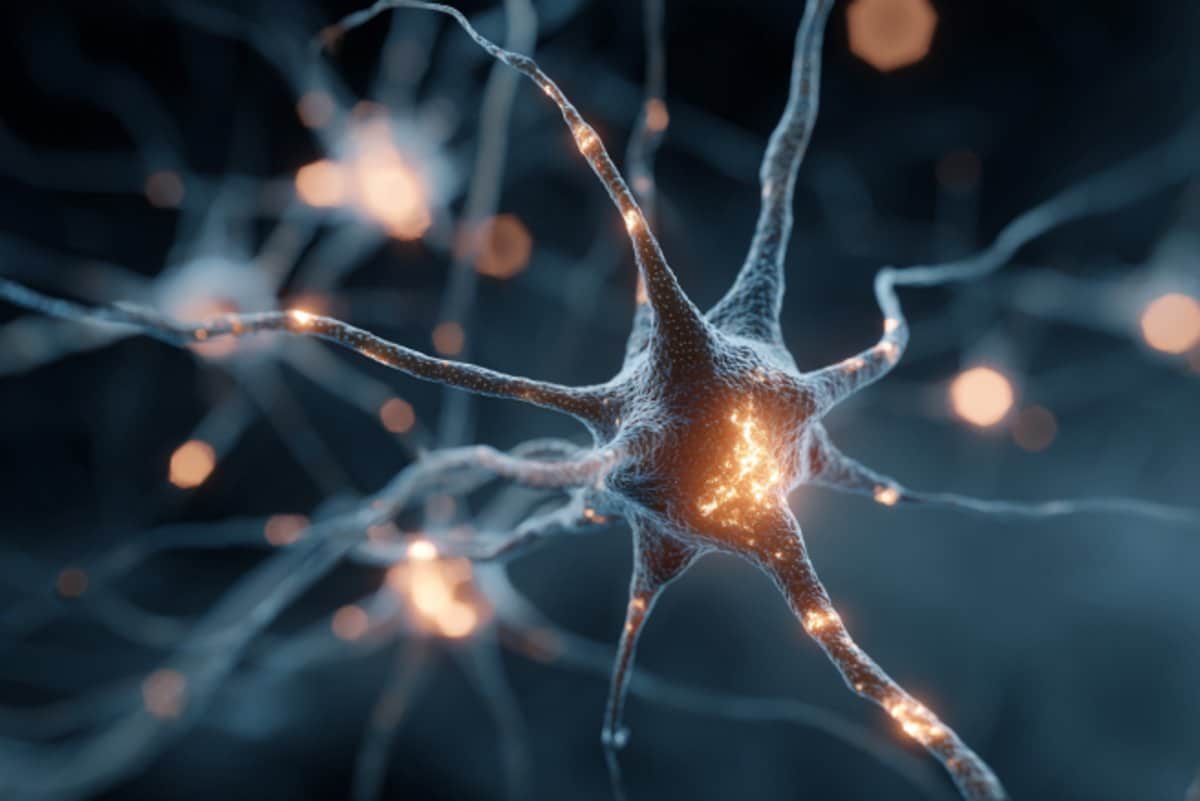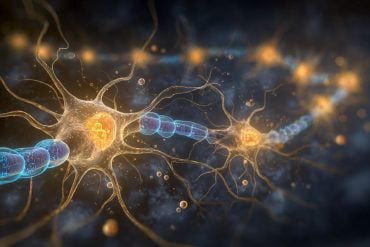Summary: Researchers have identified a rare type of brain cell whose overactivity may contribute to schizophrenia-like symptoms, such as cognitive deficits and disrupted sleep. When scientists reduced the activity of these cells in mice with a schizophrenia-linked mutation, the animals’ behavior and sleep patterns normalized.
The findings suggest these neurons play a critical role in the brain’s ability to regulate function and compensate for early developmental abnormalities. This discovery may open a therapeutic window for preventing schizophrenia’s cognitive symptoms before they emerge.
Key Facts
- Overactive Neurons: A rare brain cell type becomes hyperactive in schizophrenia-like mice, disrupting sleep and cognition.
- Chemogenetic Rescue: Reducing these cells’ activity restored normal sleep patterns and improved behavior.
- Prevention Window: Findings point to a developmental stage when targeted intervention could prevent symptoms before onset.
Source: University of Copenhagen
Difficulty completing everyday tasks. Failing memory. Unusually poor concentration.
For many people living with schizophrenia, cognitive challenges are part of daily life. Alongside well-known symptoms such as hallucinations and delusions, these difficulties can make it hard to live the life they want.
That is why researchers at the University of Copenhagen are working to find ways to prevent such symptoms – and they may now be one step closer.

In a new study, researchers discovered that a specific type of brain cell is abnormally active in mice displaying schizophrenia-like behavior. When the researchers reduced the activity of these cells, the mice’s behavior changed.
“Current treatments for cognitive symptoms in patients with diagnoses such as schizophrenia are inadequate. We need to understand more about what causes these cognitive symptoms that are derived from impairments during brain development.
“Our study may be the first step toward a new, targeted treatment that can prevent cognitive symptoms,” says Professor Konstantin Khodosevich from the Biotech Research and Innovation Center at the University of Copenhagen, and one of the researchers behind the study.
Early Turning Point in the Brain May Enable Treatment
Schizophrenia stems from abnormal brain development, which can begin even before birth. Yet symptoms typically don’t appear until later in life.
“For a long time, the brain is able to compensate for developmental errors and maintain relatively normal function. But at some point, it’s like a chain snapping – the brain can no longer compensate, and that’s when symptoms emerge. Until that point, however, prevention should be possible,” says Katarina Dragicevic, one of the study’s first authors.
She investigated when this turning point occurs. By tracking brain development from the fetal stage to adulthood, she found that dramatic changes happen late in the brain’s development. Up until the transition from childhood to adolescence, molecular and functional changes in the brain were rather minor, likely explaining lack of symptoms before adolescence.
“Our study shows that until a specific point, brain development is largely unaffected by changes. The period leading up to that point may represent a treatment window where we can prevent functional impairment,” says Katarina Dragicevic.
Sleep Reveals Disruptions in Brain Function
The researchers have worked with mice carrying a specific genetic mutation known as “15q13.3 microdeletion syndrome.” In humans, this syndrome is associated with epilepsy, schizophrenia, autism, and other neurodevelopmental disorders.
“We know that sleep is often disrupted in people with psychiatric disorders, so we chose to use sleep as a behavioral marker—something we could observe. We examined both the mice’s behavior and the activity of a specific type of brain cell. Our findings show that one particular cell type is significantly affected in the test animals compared to healthy mice,” explains Katarina Dragicevic.
These rare brain cells are often overlooked because they make up only a tiny fraction of the brain’s total cell population. Nevertheless, they play a crucial role in regulating many brain functions.
A Potential Target for Treatment
The new study not only demonstrates a link between this specific type of brain cell and sleep – it also shows that the mice’s sleep patterns began to resemble those of healthy mice when researchers reduced the activity of the cell type in question.
“This means that this type of brain cell plays a critical role in sleep in mice with this syndrome. Using a technique called chemogenetics, we can reduce the activity of these cells and restore normal sleep patterns—potentially alleviating other psychiatric symptoms as well,” says Assistant Professor Navneet A. Vasistha from the Biotech Research and Innovation Center, and one of the study’s lead authors.
Although researchers are still far from being able to conduct similar tests in humans, the discovery marks an important first step on the long road of drug development.
“This cell type could potentially become a treatment target. We hope that in the future, patients will benefit from a therapy for cognitive disorders that doesn’t broadly affect brain cells, but is so precisely targeted that side effects can be minimized,” says Navneet A. Vasistha.
Key Questions Answered:
A: It reveals that overactivity in a small population of brain cells can trigger schizophrenia-like behaviors, suggesting a specific cellular target for treatment.
A: They used genetically modified mice with a human-linked mutation and found that reducing the overactive cells’ activity restored normal behavior and sleep.
A: It suggests that precise, cell-specific treatments could prevent or reduce schizophrenia symptoms without widespread side effects.
About this schizophrenia and neuroscience research news
Author: Anna Ahlbom
Source: University of Copenhagen
Contact: Anna Ahlbom – University of Copenhagen
Image: The image is credited to Neuroscience News
Original Research: Open access.
“Dysfunction of cortical GABAergic projection neurons as a major hallmark in a model of neuropsychiatric syndrome” by Konstantin Khodosevich et al. Neuron
Abstract
Dysfunction of cortical GABAergic projection neurons as a major hallmark in a model of neuropsychiatric syndrome
Neuropsychiatric disorders have a strong genetic component and are linked to developmental risk factors, yet it is unclear why symptoms appear only later in life and which neuronal types contribute to brain dysfunction.
We addressed these questions using a robust mouse model of a neuropsychiatric syndrome—the 15q13.3 microdeletion. Single-nucleus transcriptomics revealed the largest gene expression alterations in the somatostatin (Sst) Sst_Chodl subtype, the long-range γ-aminobutyric acid (GABAergic) projecting neurons.
Despite the developmental onset of perturbations, impairments in Sst_Chodl neurons manifested only at late maturation. Calcium imaging and patch-clamp recordings unraveled impaired responsivity overall in deep-layer Sst neurons, with only the Sst_Chodl subtype exhibiting increased activity. Patch-seq analysis connected molecular changes to cellular dysfunction of Sst_Chodl neurons.
Finally, microdeletion mice displayed sleep disturbances associated with impaired activity of deep-layer Sst neurons, which were rescued by chemogenetic inhibition of Sst_Chodl neurons.
Our findings spotlight GABAergic projection neurons as potential vulnerable targets in neuropsychiatric disorders.






